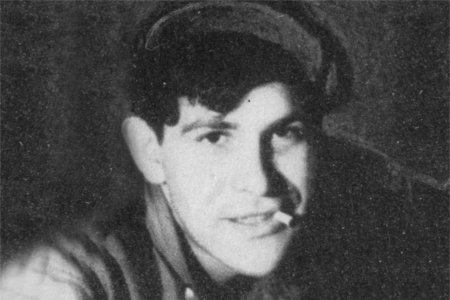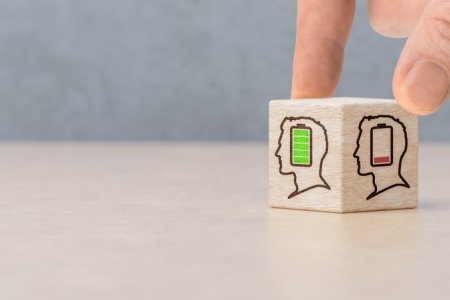All you need is to peer, — my God,
all it takes is to be more attentive, —
and you will stay becoming a captive
of these two eyes, their sudden depth.
Yuri Levitansky
We do not know how to look — perhaps this is the root of many troubles! Usually, we look in such a way as to see what we need or want. The art of looking and not noticing the main thing has become popular. Especially if what we look at is disturbing, terrible, painful, and causes guilt, shame, and despair.
Each of us is sure that they can look as well as they can breathe and walk. But this skill does not always help correctly navigate a difficult situation. In addition, two people often see the same thing differently, creating a ground for conflict. Especially in recent times, because of the war, there is an endless irreconcilable dispute within some families or between friends.
To what extent do our perceptions still correspond to reality, something that is not a product of our fantasy? If the way we see the world is far from what is happening, then the life path resembles the “Parable of the Blind” by Pieter Brueghel the Elder, in which the procession of the blind, guided by a blind, falls into the ditch after the guide.

Objective laws of perception, discovered by psychologists at the beginning of the last century, can come to the rescue. By analogy with physics, researchers conducted hundreds of experiments studying a person's visual perception. The so-called law of amplification describes one of the main processes they discovered: what we observe with our senses is naturally supplemented to a holistic image by our beliefs. Old convictions, self-esteem, authority patterns, habitual thinking, and worldview are all used here. For example, three dots on a paper are perceived as a triangle. This figure consists of two types of elements: real-life points as the vertices of a triangle and invisible sides connecting them. The second is our accumulated knowledge of triangles.
What does this have to do with our daily lives? Firstly, our ideas about the world determine what we see. For example, the Indians did not notice the ships of Christopher Columbus at sea since they had no prior experience observing such objects. Secondly, it is pointless to use facts as arguments in a dispute. Your opponents will interpret them in their own way. And thirdly, it is essential to defend your unique point of view, in which you genuinely believe. For example, the story of the end of Ernest Hemingway's life is tragic. He saw that the special services were following him, but his wife and doctors did not want to admit this and treated him with an electric shock from paranoia. Later it turned out that the writer was right.
At the core of perception are beliefs
Another discovery of psychologists was the law of good form. Everything that a person perceives tends to take a good form, the main properties of which are as follows: simplicity, completeness, elegance, clarity, and integrity. If the process of perception does not come to this, then an incomplete Gestalt arises, and a person experiences discomfort from uncertainty, confusion, and imperfection.
Therefore, we naturally choose the simplest explanation of the facts or the interpretation with which we are more comfortable. Of course, relying on one's experience, old views, propaganda's influence, and the authorities' opinion is easiest. But the modern world is changing and becoming more complex so quickly that this principle, like many others, no longer works. There is a vague unpleasant feeling that you are either being fooled or successfully fooling yourself.
At the same time, the discomfort still encourages us to form a complete picture quickly. To accomplish this, you must ignore some things, not notice apparent contradictions or what is painful. It is a difficult choice whether to put up with it or not. After all, you will have to spend time and energy understanding the situation deeper, which can make you change your life.
It turns out that every moment the human brain adds invisible elements to what it sees to attain a complete picture. So the main question is: how much can we trust these additional invisible elements? The difficulty is that the arrangement of visible and invisible elements occurs instantly and unconsciously. We certainly trust our own eyes, but at the same time, we trust the complete picture automatically completed in our minds. Therefore, we conclude that the profound basis of perception is faith.
According to the ancient definition, faith is “the substance of things hoped for and the evidence of things not seen.” Faith makes these invisible supplements exist in our minds. Different people believe in different things, often simply because they consider events from “different sides.” This may be perfectly acceptable but may lead to irritation, aggression, and even wars if the point of view of the other side is considered undoubtedly erroneous or, moreover, not having the right to exist. So it was centuries ago in Europe with Protestants and Catholics. We witness this happening now.
Therefore, it is worth checking whether you hold an erroneous faith, guaranteed to give unfulfilled expectations, prognoses, and hopes. After all, the power of belief is undeniable, whatever it may be. You swallow a placebo pill and get better, but if you swallow the same pill with fear and obsessive thoughts, you may get sick out of the blue. If people's faith differs, they will see the opposite while looking at the same thing. Sometimes the perception of large social groups of people is so different that we have to admit: we live in different worlds. Then conventional communications become almost impossible.
Is it possible to discover a mistaken belief in oneself? Unfortunately, human nature is such that one does not want to give up the usual self-deception. Let us recall Pushkin's: “I am glad to be deceived.” The trouble is that the price for this self-deception is too high. However, if you decide to make changes, you first must see your faith in all its glory. To accomplish this, you need to learn how to look.
I will focus on three specific steps we can take to see reality. So often, we do them intuitively, but then we forget, distracted by the hustle and bustle of life. First of all, you need to have contact with your heart and hear its quiet voice. Antoine de Saint-Exupery astutely wrote: “Only the heart is watchful; what is essential is invisible to the eye”. Otherwise, there is no reliable support for the authentic vision. We should not use our intellect because, as we said earlier, our thoughts distort this process! Fortunately, there are many means and ancient practices for turning to your depth: meditation, yoga, prayer, or just drinking tea in the company of a good person.
Next, it is essential to acquire a freshness of perception, to see the world and yourself in it every time anew. According to the same law of amplification, turning off thoughts and habitual beliefs as much as possible when you look at something is worth it. The phenomenological perception, proposed by Edmund Husserl, provides a way to look at things without prior opinions. Watch as little children, who have no accumulated knowledge, can watch. Look at individual facts and the picture as a whole without prejudice.
It is a start. If it works out, look further at your beliefs, which are invisible and turned on automatically. The English word beliefs means both “faith” and “ideas”, convictions that something is true and, therefore, has all cognitive phenomenons that accompany the formation of a holistic picture. Consequently, it is essential to look at them anew to abandon the alien, seductive and outdated. The most radical way is given to us by Jidda Krishnamurti. Through all his books and public speeches, there is a complete rejection of thoughts and beliefs to look at oneself and the world with an absolutely pure mind.
And the last thing is to take responsibility for what you see. Give yourself an account: do you want to see what is there, or will you continue to see what is not? It's a subtle but decisive choice. It is called a moral or existential choice to emphasize that in this situation, a person chooses not one of the alternatives but himself — what he will be like if he turns right or left at the fork in his life path. As Boris Pasternak's poem says, it is the eternal Hamlet question everyone solves alone when: “All round me drowns in falsehood.” It takes courage and sobriety to face and live by the truth.
Arkady Davarov — IT specialist, psychologist
The opinions expressed in the “Blogs” section may not reflect the editors' views.



